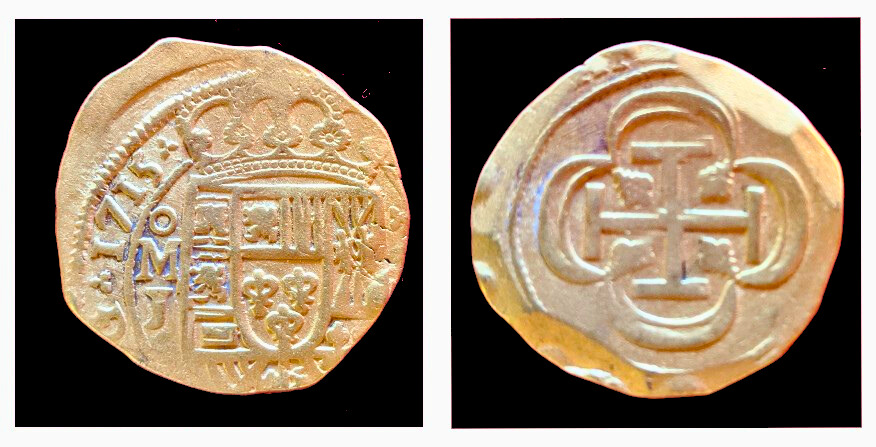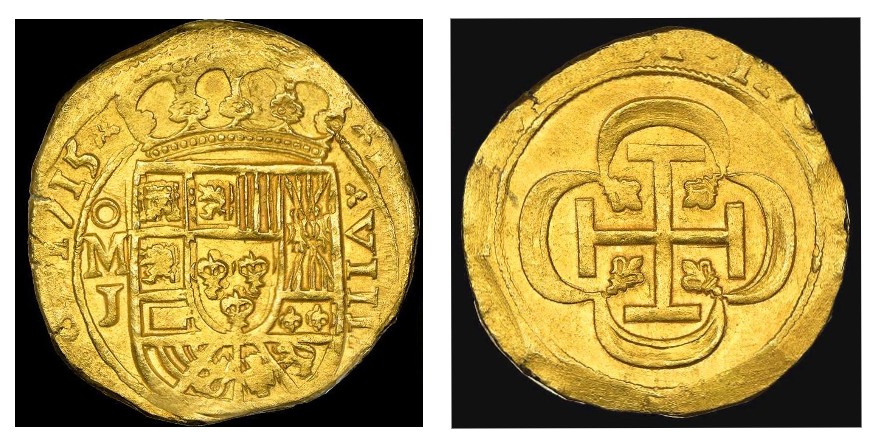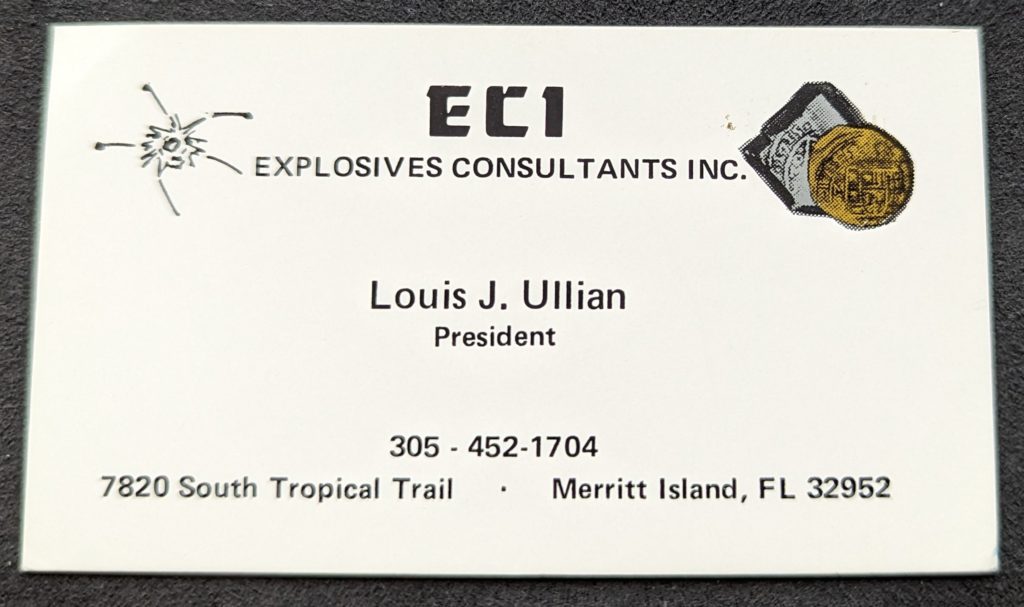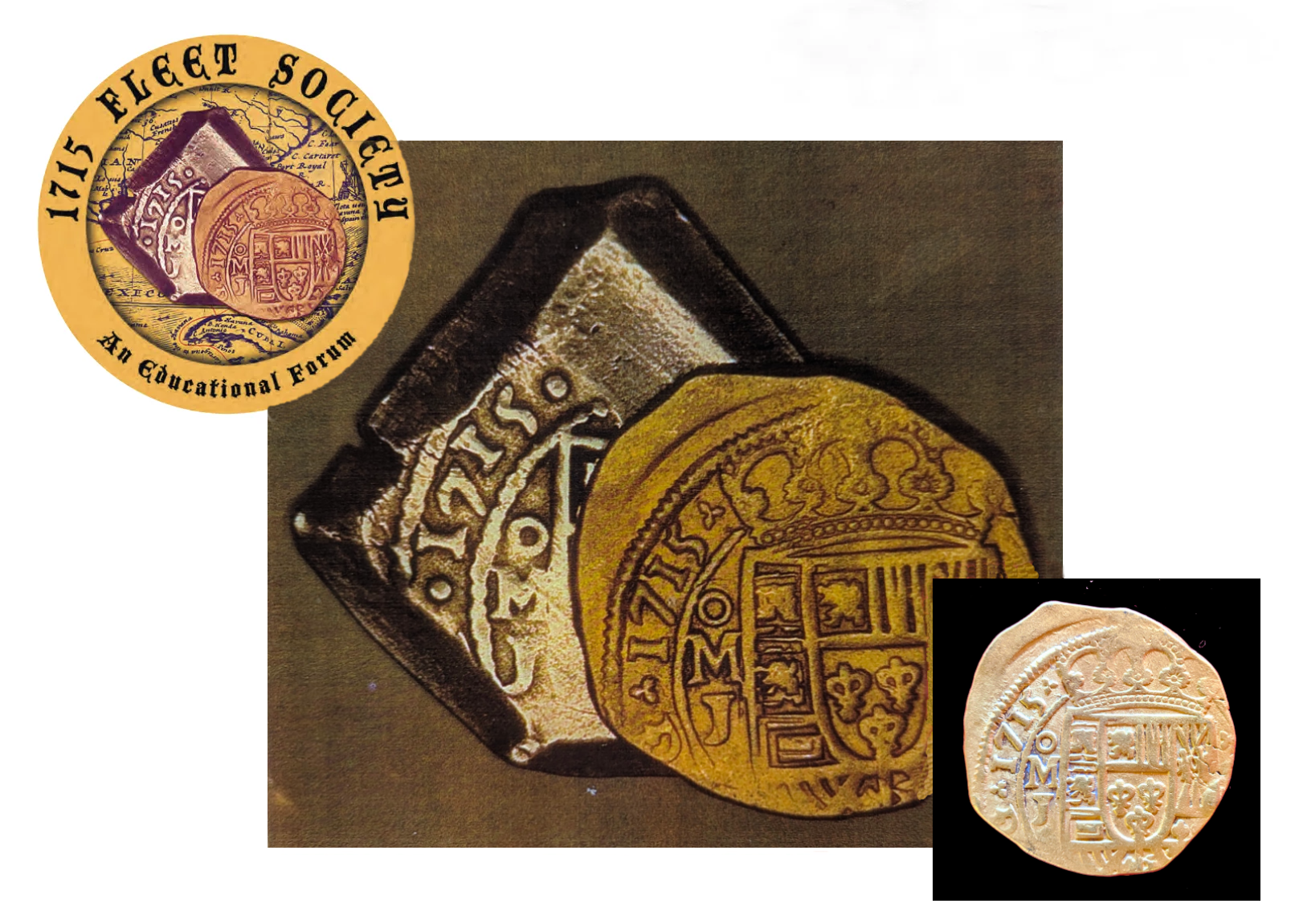Our Treasure of the Month for July is this 1715 dated eight escudos gold coin (also known as a “cob”) from the Spanish colonial mint located in Mexico City. This coin is one of two depicted on the Fleet Society logo. The other coin is also dated 1715 and likewise a product of the mint in Mexico City but it is made of silver. We told the story of the silver coin when we featured it as our Treasure of the Month 12 years ago in July, 2011. The silver coin was used by the Real Eight CompanyAlso referred to occasionally as “The Real 8 Company”- was incorporated in 1961. It had eight members….Kip Wagner, Kip Kelso, Dan Thompson, Harry Cannon, Lou Ullian, Del Long, Erv Taylor and Lis... More on promotional brochures and official letterhead. Both coins were chosen by the Real Eight CompanyAlso referred to occasionally as “The Real 8 Company”- was incorporated in 1961. It had eight members….Kip Wagner, Kip Kelso, Dan Thompson, Harry Cannon, Lou Ullian, Del Long, Erv Taylor and Lis... More to use on company letterhead. The coins had to have a full date, a full OMJ (mint and assayers mark) and be well struck with a lot of detail. A group of Real Eight members picked these two coins together to be matched together ostensibly to be used on stationary. But, from what we can tell, that never happened. Although a picture was taken with the two coins together no company documents have yet surfaced that displayed this particular logo. However, all was not lost. The Fleet Society adopted this logo as its own.
The gold coin in question is a beautiful fully dated coin and weighs in at 26.8 grams. Although the obverse details are slightly off center, the bold date and OMJ justify its being selected from a group of 50 “candidates” as the best of the best. The reverse features a nicely centered cross to compliment the piece.
Our die study of the 1715 coinage confirms that two shield dies (and at least two cross dies) were used to strike all of the 1715 Mexican 8 escudos that have survived to us. This coin shows us the somewhat rarer 1st Shield (and Cross B die).

Diagnostics of the 1st shield include fleurs with truncated tops in the Bourbon escutcheon. These are set low and angled slightly left. The inner border also touches the crown. One die would likely have sufficed for the January-April production, but Mexico City seems to have preferred to use its dies simultaneously. Despite better dies and better planchet preparation, Mexico City continued to adjust the weight of struck coins by multiple faceting, somewhat undermining their apparent desire to present more attractive round coins. Lima and Santa Fe adjusted their gold coins on the edge, but Mexico City persisted in surface faceting throughout the cob era. For some reason, doubling was also a conspicuous problem in 1715 (mercifully absent here). More than a third of 1715 onzas show unattractive large-scale doubling of the shield or cross. Mexico City seems to have solved the double striking problem shortly after 1715 by resorting to a mechanical press to strike its limited gold production. 1715 may have been the last year at Mexico City for hand-struck gold cobs.

While we do not know why this logo was never adopted by the Real Eight CompanyAlso referred to occasionally as “The Real 8 Company”- was incorporated in 1961. It had eight members….Kip Wagner, Kip Kelso, Dan Thompson, Harry Cannon, Lou Ullian, Del Long, Erv Taylor and Lis... More for use, we did find at least one example of the logo being implemented by a Real Eight member for his personal use. Lou UllianLouis J. (Lou) Ullian (1932 – 2010) Was a diver and original member of the Real Eight Company. A native of Worcester, Massachusetts he served in the U.S. Navy, Naval Weapons Station from 1956 – 19... More, one of the original members, had a company called ECI (Explosives Consultants Inc.). There, on his business card (below), one can clearly see in the upper right hand corner the very logo that depicts the top two finest Fleet coins chosen by the Real Eight CompanyAlso referred to occasionally as “The Real 8 Company”- was incorporated in 1961. It had eight members….Kip Wagner, Kip Kelso, Dan Thompson, Harry Cannon, Lou Ullian, Del Long, Erv Taylor and Lis... More. Apparently, Lou recognized the beauty of these two pieces together and could not let this wonderful logo go unused. We (at the Fleet Society) are thankful that this image was preserved and that we were fortunate enough to be the recipients of the Real Eight Company’s efforts.

For more about the silver coin mentioned above see our Treasure of the Month for July, 2011.
